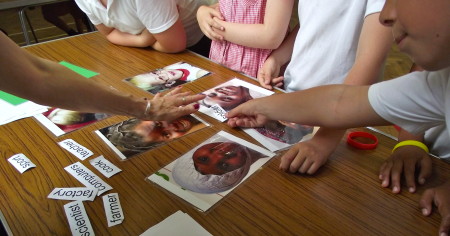About this Collection
What do I want to find out?
To what extent do pupils hold stereotyped ideas of gender and ethnicity?
What do I need?
- Photos of six children or young people of similar age to your pupils: three boys and three girls. For each gender choose children of diverse ethnicities. Make sure all have level eye contact with the camera and are smiling. Crop the photos to avoid background scenery. If possible include at least one child/young person with a visible disability and one whose religion is clear.
- Jobs cards, choose from:
builder, farmer, doctor, nurse, teacher, scientist, cleaner, cook, sports, artist, computers, soldier, factory
- Question sheet asking Who will have which job? And why?
What do I do?
Timing: 10 minutes
- Choose eight job titles from the selection.
- With the pupils in groups of three or four, ask them to decide which child will have which job and put the label on the photograph.
- Note the discussions, explanations and justifications used to reach a consensus
- Record all the choices made and explanations given.
How do I analyse the results?
- Compare the job choices for boys and girls in the photographs, and for different ethnicities, counting the number of times each is chosen as follows:
| Builder | Cleaner | Cook | Doctor | Farmer | Nurse | Scientist | Teacher | |
| Girls | ||||||||
| Boys |
| Builder | Cleaner | Cook | Doctor | Farmer | Nurse | Scientist | Teacher | |
| African | ||||||||
| Asian | ||||||||
| European |
- Look for evidence of pupils’ choices showing stereotyping by gender, ethnicity, disability or religion.
- See whether pupils’ comments indicate that they recognise diversity within the UK, or do they assume, for example, that children of African heritage must be in Africa.
How do I measure the change?
- Depending on the time between each audit, you can repeat the activity exactly, or use an alternative set of photos based on the same criteria. You can also use Who would you choose to be your friend as a follow up activity to measure change.
- Examine the extent to which pupils show a positive change in their attitudes towards people they perceive to be different.
- Look for a more even distribution of jobs between genders and across ethnicities.
- Note the extent to which pupils are able to challenge the activity itself, on the basis that it’s impossible to know what job a child/young person will do as an adult. Do they recognise that the act of allocating jobs to any of the children/young people involves making assumptions or drawing on stereotypes?
Alternatives and Adaptations
Why not use photographs of people from your local community whose job roles might challenge stereotypes. Or you could use selfies taken by adults from Brighton instead of photos of children. You can find these selfies on the website.


